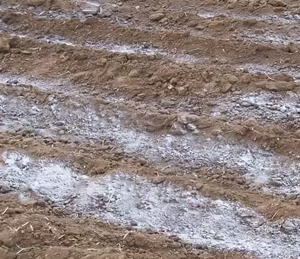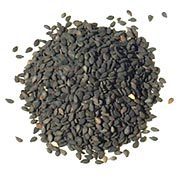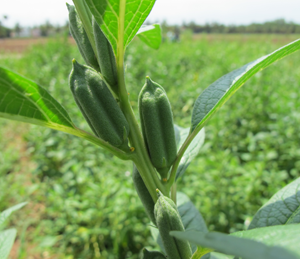QUALITY SEED PRODUCTION IN GINGELLY
|
|
Gingelly - Flower |
Gingelly- Capsule |
Land requirement
- Land should be free of volunteer plants.
- The previous crop should not be the same variety or other varieties of the same crop.
- It can be the same variety if it is certified as per the procedures of certification agency.
|
Field Standards
A. General Requirements
Isolation
Sesame seed fields shall be isolated from the contaminants as specified below
Contaminants |
Minimum distance (Meters) |
Foundation |
Certified |
| Fields of other varieties |
100 |
50 |
| Fields of the same variety not conforming to varietal purity requirements for certification |
100 |
50 |
B. Specific requirements
Factor |
Maximum permitted (%)* |
Foundation |
Certified |
| Off types |
0.10 |
0.20 |
| **Plants affected by seed borne diseases |
0.50 |
1.00 |
*Maximum permitted at any inspection conducted during and after flowering
**Seed borne disease shall be: Leaf spot (Cercospora sesame Zimm.) |
|
Pre sowing seed management
- Coat the seeds with TNAU Vidhai Amirtham @ 68 ml/ kg of seeds.
- TNAU seed pelleting technology may be used to increase the seed size and weight to facilitate precision sowing using seed drill.
Method of sowing
- Form ridges and furrows and apply recommended dose of fertilizer along the furrows.
- Mix the seeds with four times of its volume of dry sand and drop the mixture evenly along the furrowsand cover with soil.
|

Unpelleted seed
|
| 
Pelleted seed |
Fertilizer
- Apply NPK @ 50:25:25 kg / ha and Manganese sulphate @ 5 kg / ha as basal
application
Foliar application
- Spray 1 % DAP at the time of first flowering and 10 days after the first spray for enhanced seed set
|
 Fertilizer application
Fertilizer application
|
Roguing
- Roguing should be done from vegetative to reproductive stage, based on plant,leaf,flower, pod and seed characters.
- In addition to the offtypes, the pest and disease affected plants should also be removed.
Field Inspection
- A minimum of three inspections shall be made, i) before flowering, ii) during flowering iii) prior to harvesting.
Harvesting
- Harvest the crop when 75 - 80 % of the pods started yellowing and bottom 1 or 2
pods have dehisced. At this stage, the pod moisture content will be 50 - 60 % and
seed moisture content will be 25 - 30 % and the seeds will be chocolate brown colour.
- Stake the plants in inverted position and cure them for 3 - 4 days.
Threshing
- Beat the staked plants with pliable bamboo stick for removal of seeds.
Drying
- Dry the seeds to 7- 8 % moisture content.
|
Seed grading
- Grade the seeds with 4 / 64” round perforated sieve.
Pre-storage seed treatment
- Treat the seeds with carbendazim @ 2 g / kg along with carbaryl 200 mg / kg of seed.
Storage
- Store the seeds with a seed moisture content of 8 - 9 %.in gunny or cloth bag for short term storage (8 - 9 months).
- Store the seeds with a seed moisture content of 6 - 7 %.in polylined gunny bag for medium term storage (12 - 15 months).
- Store the seeds with seed moisture content of 5 %.in 700 gauge polythene bag for long term storage (more than 15months).
Seed Standards
|
Factor |
Standards for each class |
| Foundation |
Certified |
| Pure seed (minimum) |
97.0% |
97.0% |
| Inert matter (maximum) |
3.0% |
3.0% |
| Other crop seeds (maximum) |
10/kg |
20/kg |
| Weed seeds (maximum) |
10/kg |
20/kg |
| Other distinguishable varieties (maximum) |
10/kg |
20/kg |
| Germination (minimum) |
80% |
80% |
| Moisture (maximum) |
9.0% |
9.0% |
| For vapour-proof containers (maximum) |
5.0% |
5.0% |
|
 Gingelly - Seed
Gingelly - Seed |
Source
The Professor and Head,
Department of Seed Science & Technology,
TNAU, Coimbatore-641003.
Phone:0422-6611363
Email: seed@tnau.ac.in
|






